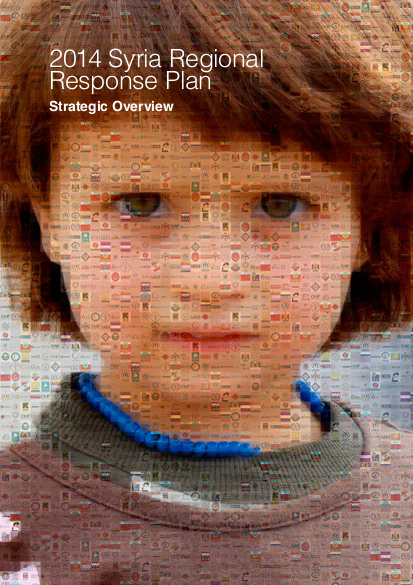
UNHCR data indicates that between May and November 2013, an average of 127,000 people were registered each month. Based on an analysis of population movements within and from Syria, the sixth Syria Regional Response Plan (RRP6) foresees up to 4.1 million refugees in the region by the end of 2014. This would make Syrians the largest refugee population in the world.
The RRP6 addresses three specific target populations, namely: refugees in fixed settlements like camps; refugees living outside camp settlements; and host communities. The Plan foresees a coordinated response to the needs of new arrivals, clearer assessments of vulnerability among the existing refugee populations, and to address the most immediate local priorities such as waste management, water supply, small-scale reconstruction and health service delivery. The response strategies were developed with a view to ensuring cost-efficiency, impact and effectiveness, as well as accountability towards refugees and donors. This protracted displacement has placed great pressure on refugees’ capacity to be self-sufficient, and many resort to negative coping strategies.
Whilst refugee influxes invariably incur local socio-economic consequences, the scale and depth of the Syrian refugee crisis represents an unprecedented and urgent challenge for host country authorities and the international assistance community. Consequently, an important component of the RRP6 is devoted to strengthening local service delivery and resilience, thereby promoting social cohesion and enhancing refugee and host community protection. Although limited in its intended scope and duration, the RRP6 is designed to complement longer-term development interventions upon which stabilization processes in the region will largely depend. The strategic response plan is intended to be flexible, and will be modified as conditions change. It will be re-visited in mid-2014 to validate planning assumptions and harmonize interventions with other emerging platforms and plans.
The RRP6 has drawn on a common set of needs assessments based on qualitative and quantitative data collected from refugee and local communities. The Plan has been developed in a participatory manner with several contributors – national governments, international inter-governmental agencies (IGOs), as well as international and national non-governmental organizations (NGOs) and refugee communities, and incorporates the outcome of consultations with donors and other stakeholders. While all country strategies in the RRP6 have been developed in close consultation with relevant national authorities, the Governments of Egypt, Jordan and Lebanon have chosen to present their financial requirements jointly in this Plan.
The RRP6 is structured in three parts: the strategic overview, outlining the main strategic features of the Syria regional refugee response; five country chapters setting out the context and response strategy for each of the main host countries; and 35 country sector chapters providing detailed information on specific needs and objectives per sector.
In recognition of the total length of the plan, the document is available digitally from the Syria Regional Refugee Response portal (http://data.unhcr.org/syrianrefugees).